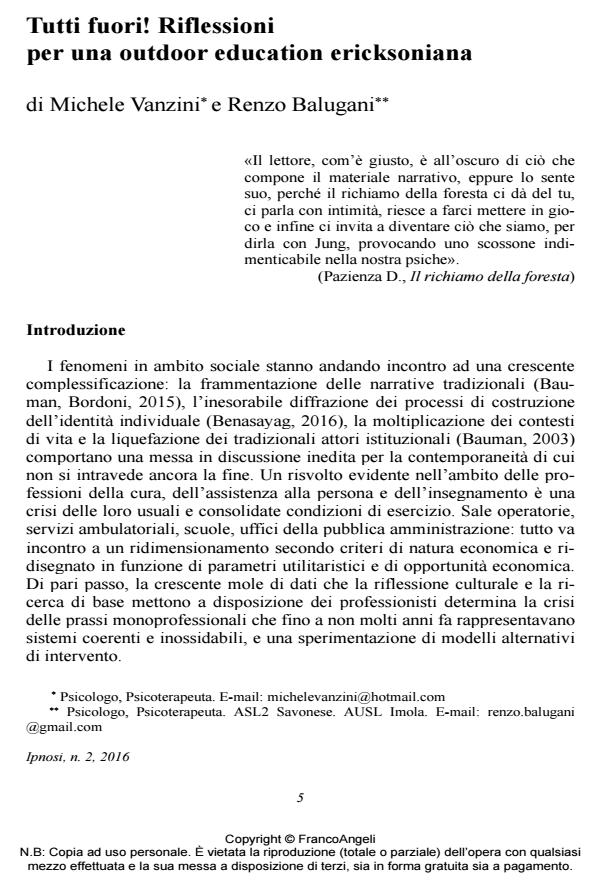Tutti fuori! Riflessioni per una outdoor education ericksoniana
Journal title IPNOSI
Author/s Michele Vanzini, Renzo Balugani
Publishing Year 2016 Issue 2016/2
Language Italian Pages 19 P. 5-23 File size 269 KB
DOI 10.3280/IPN2016-002001
DOI is like a bar code for intellectual property: to have more infomation
click here
Below, you can see the article first page
If you want to buy this article in PDF format, you can do it, following the instructions to buy download credits

FrancoAngeli is member of Publishers International Linking Association, Inc (PILA), a not-for-profit association which run the CrossRef service enabling links to and from online scholarly content.
This article introduces the outdoor as a viable dimension in which inscribe educative and psychotherapeutic activities. The main principles of this kind of activity are discussed, and links between the chances and the challenges offered by the environmental domain and the principle teached by Milton Erickson are offered. A section is dedicated to the description of three real cases, in order to give the reader inspiration and example on how an outdoor activity can be thought about, designed and implemented, in which natural elements play the role of key-resource for the change.
Keywords: Outdoor, nature, Erickson, naturalism, psychotherapy
Michele Vanzini, Renzo Balugani, Tutti fuori! Riflessioni per una outdoor education ericksoniana in "IPNOSI" 2/2016, pp 5-23, DOI: 10.3280/IPN2016-002001